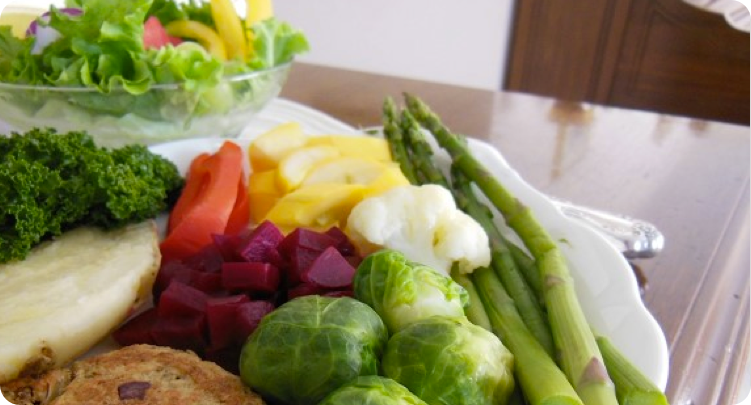Iron Rich Foods for Your Daily Diet
- Aug 14, 2019, 9:11 AM

Iron is an essential mineral. Our body needs adequate iron to make enough healthy oxygen-carrying red blood cells. About two-thirds of our body’s iron is found in a protein of our red blood cells called hemoglobin. Hemoglobin carries oxygen from our lungs to the tissues of our body. Our body can’t get enough oxygen without healthy red blood cells. Iron is also necessary to maintain healthy cells, support our immune system and it contributes to normal cognitive function. Low iron is a common nutritional deficiency in the U.S. When iron levels are low you may feel fatigued, weak and irritable. The solution, in most cases, is to consume more foods that contain adequate amounts of iron.
How Much Iron Do You Need?
The Recommended Dietary Allowances (RDA) for iron are set to meet the average needs of the general population. The current RDA for iron (daily): for males, age 14-18: 11 mg, for males, age 19+: 8 mg, for females, age 14-18: 15 mg, for females, age 19-50: 18 mg, and for females over 50: 8 mg.
Speak to your health care provider for your specific needs. An additional need for iron may result from: medications, medical conditions, pregnancy, a woman with heavy menstrual periods, if you are a frequent blood donor or if you are a vegetarian or vegan.


What Are the Best Sources of Iron?
A healthy, varied diet will generally provide the iron you need. You may have heard that you can get iron from liver and red meat, but there are many other foods that naturally contain iron.
The most easily absorbed form of dietary iron is called heme iron. This is iron attached to the hemoglobin protein and is found in red meat, poultry, and seafood. Heme iron is readily absorbed by our body.
Iron found in plant foods such as lentils, beans and spinach is non-heme iron. To increase the absorption of the iron found in plant sources, it is best to eat a variety of iron-rich plant foods daily and combine this with a good source of vitamin C. Vitamin C (found in citrus, dark green leafy vegetables, broccoli, bell peppers, strawberries, tomatoes, etc.) increases the body’s absorption of iron from food. As an example, you can squeeze some lemon juice over your leafy green salad to increase the amount of iron you absorb. Beta carotene can also increase the absorption of iron. It’s responsible for the red, yellow and orange coloration of some fruits and vegetables. It’s found in foods such as carrots, sweet potatoes, cantaloupe, and squash.
- Food Sources of Heme Iron:
-
- Chicken or Beef Liver
- Beef, Chicken, Turkey, Pork
- Shellfish such as Clams, Oysters, Mussels, Shrimp
- Veal or Lamb
- Eggs
- Fish such as Halibut, Haddock, Perch, Salmon, Tuna, Sardines
- Food Sources of Non-Heme Iron:
-
- Legumes (such as lima beans, chili beans, lentils, peas, soybeans and peanuts)
- Vegetables (such as spinach, broccoli, asparagus, kale, chard, collards, brussel sprouts, string beans, mushrooms, potatoes, tomato sauce, and sauerkraut)
- Fruits (such as prune juice, prunes, figs, dates, raisins, dried apricots and peaches)
- Pumpkin, Sunflower or Sesame Seeds
- Nuts (such as almonds, pistachios, pecans, walnuts, and cashews)
- Fortified Cereals, Brown Rice, Wheat and Oats
What About Iron Supplements?
Although iron is widely available in food, there are certain groups of people that may need more iron. Infants and toddlers have a greater need as do adolescent girls and women, 19 to 50 years of age. This is also important for women who are pregnant. If you feel that your iron is low check with your doctor before taking any supplement. It is good to take vitamin C with the iron supplementation for both better absorption and to reduce any constipation that may be caused by the iron supplements. Your health care provider will assess your status and recommend any necessary dietary changes or supplements.
